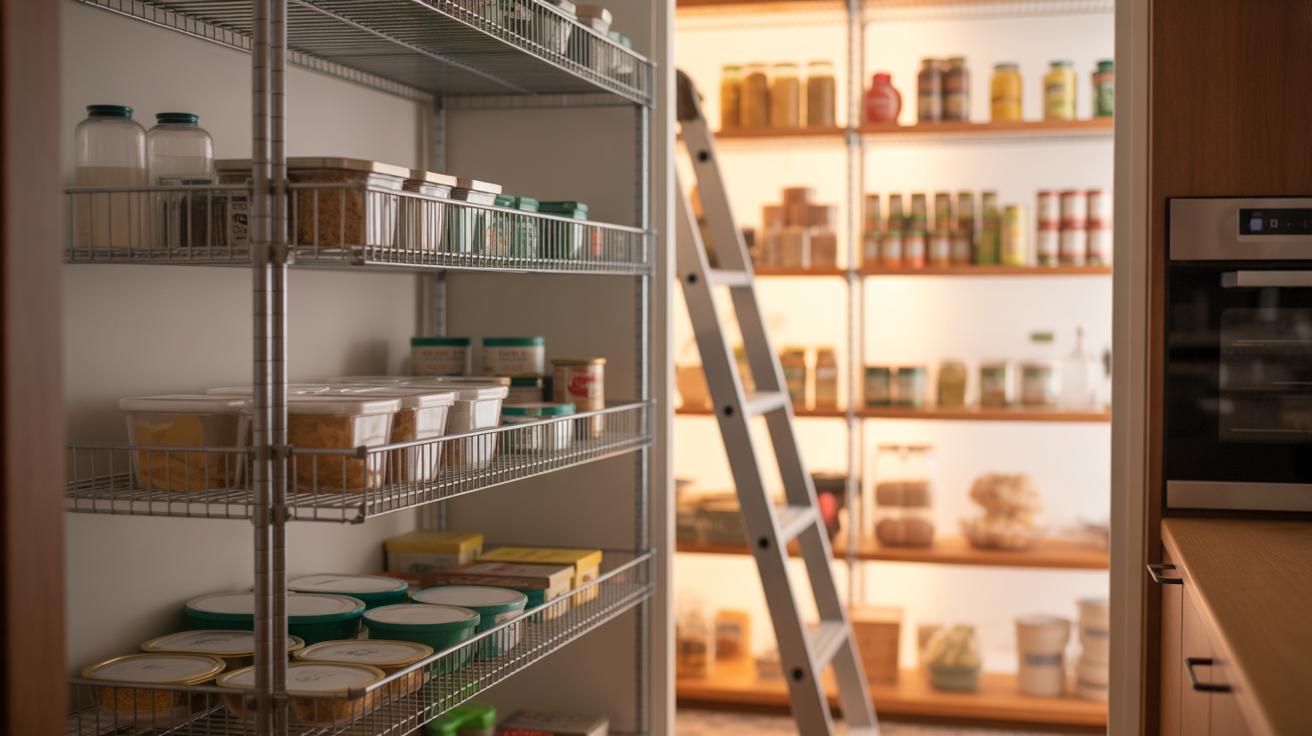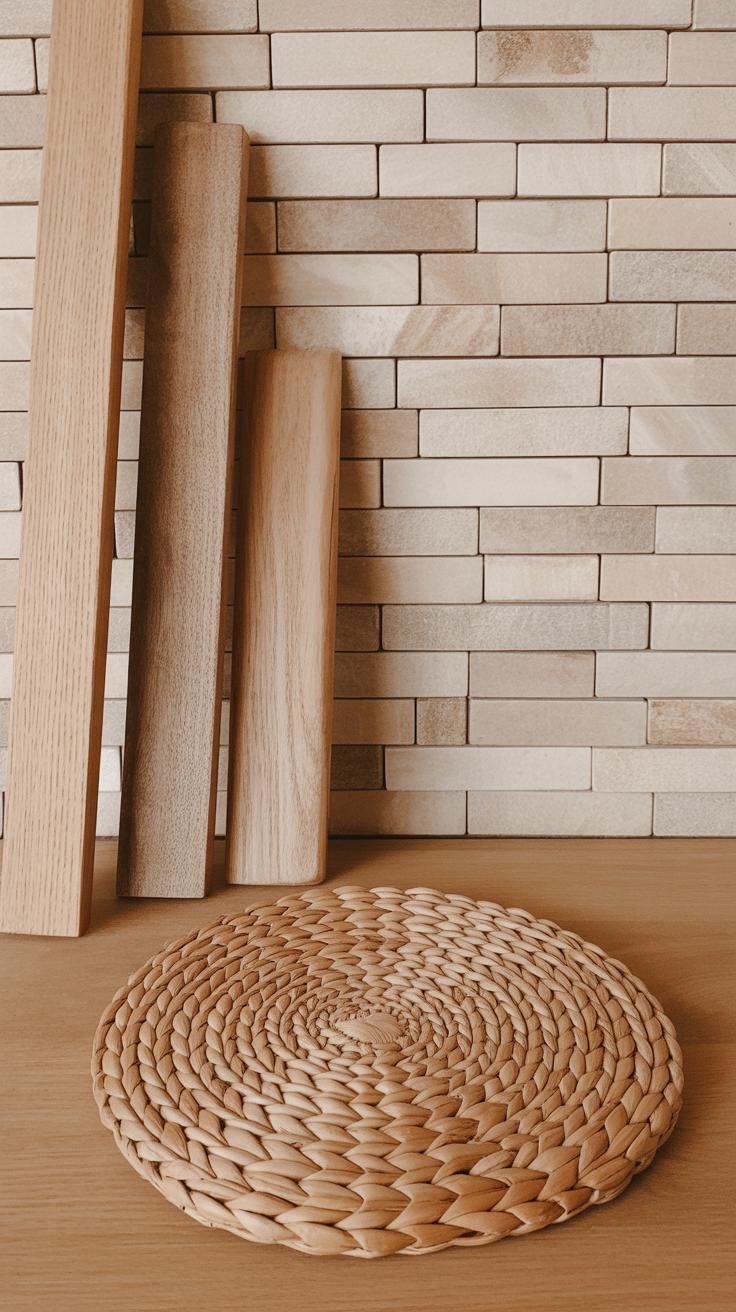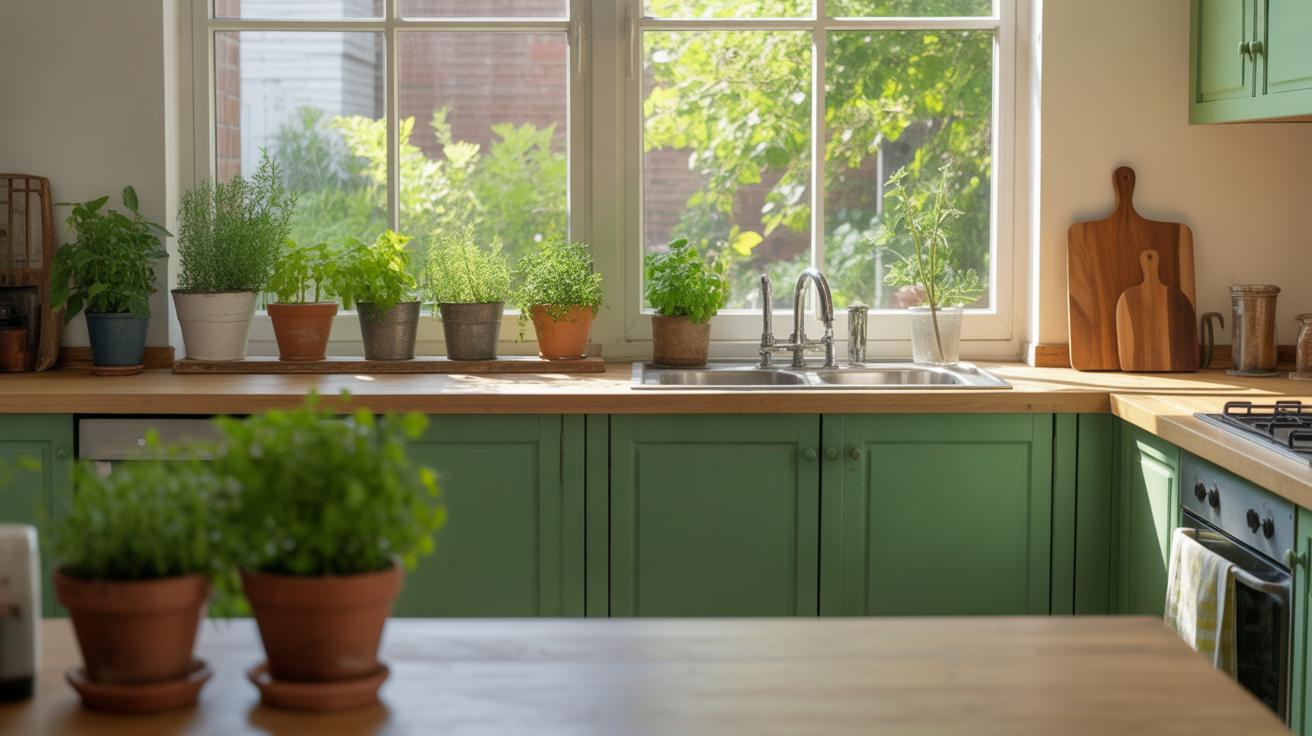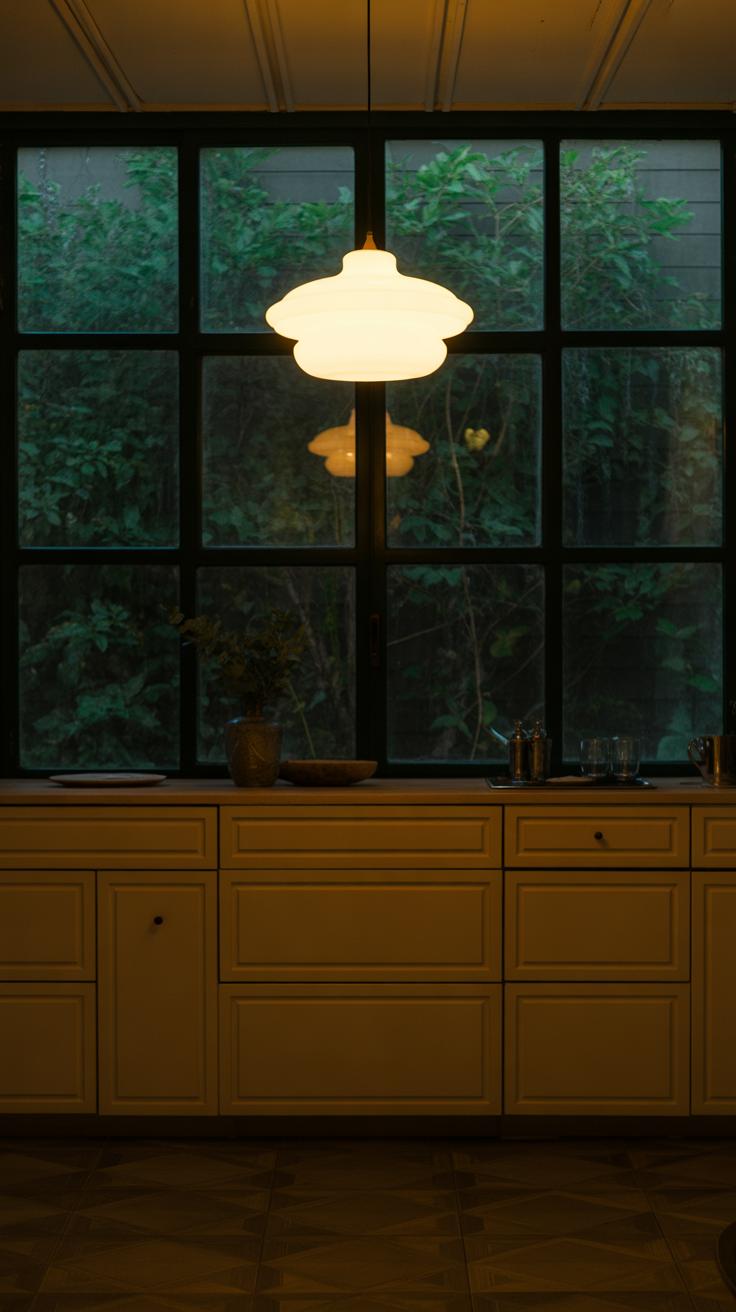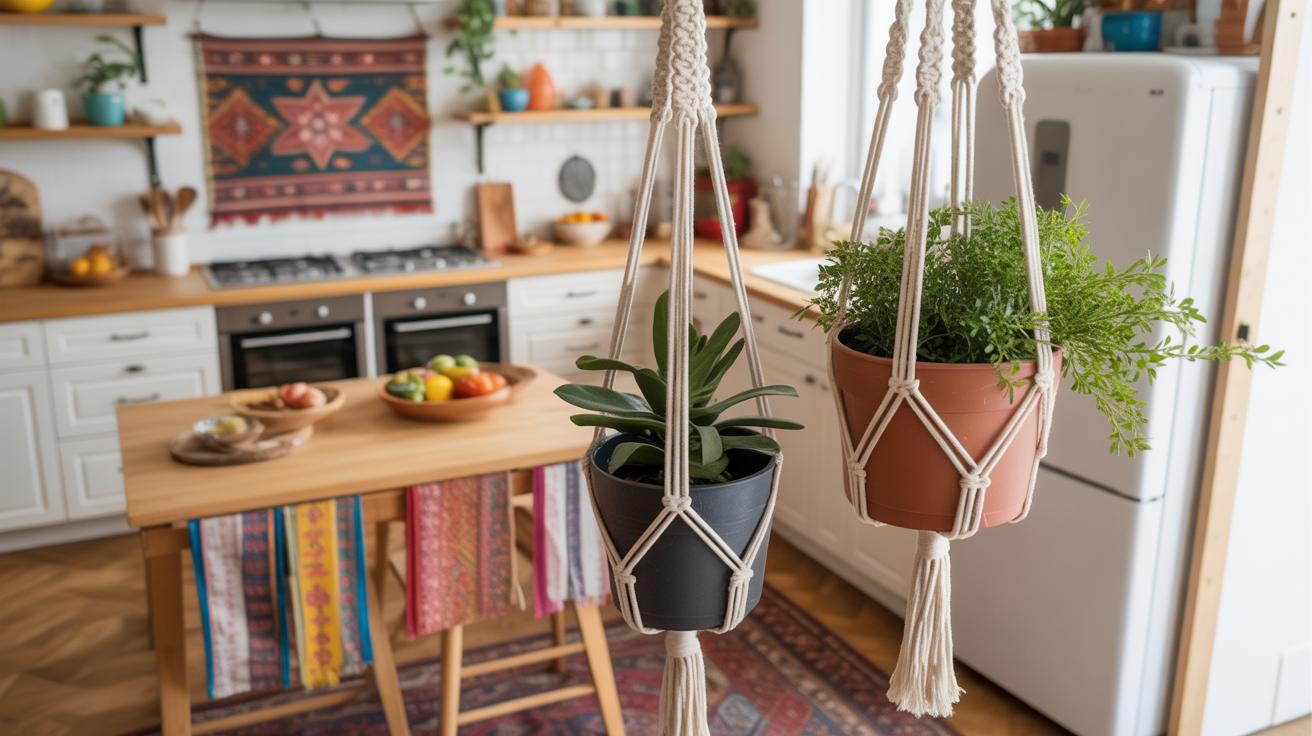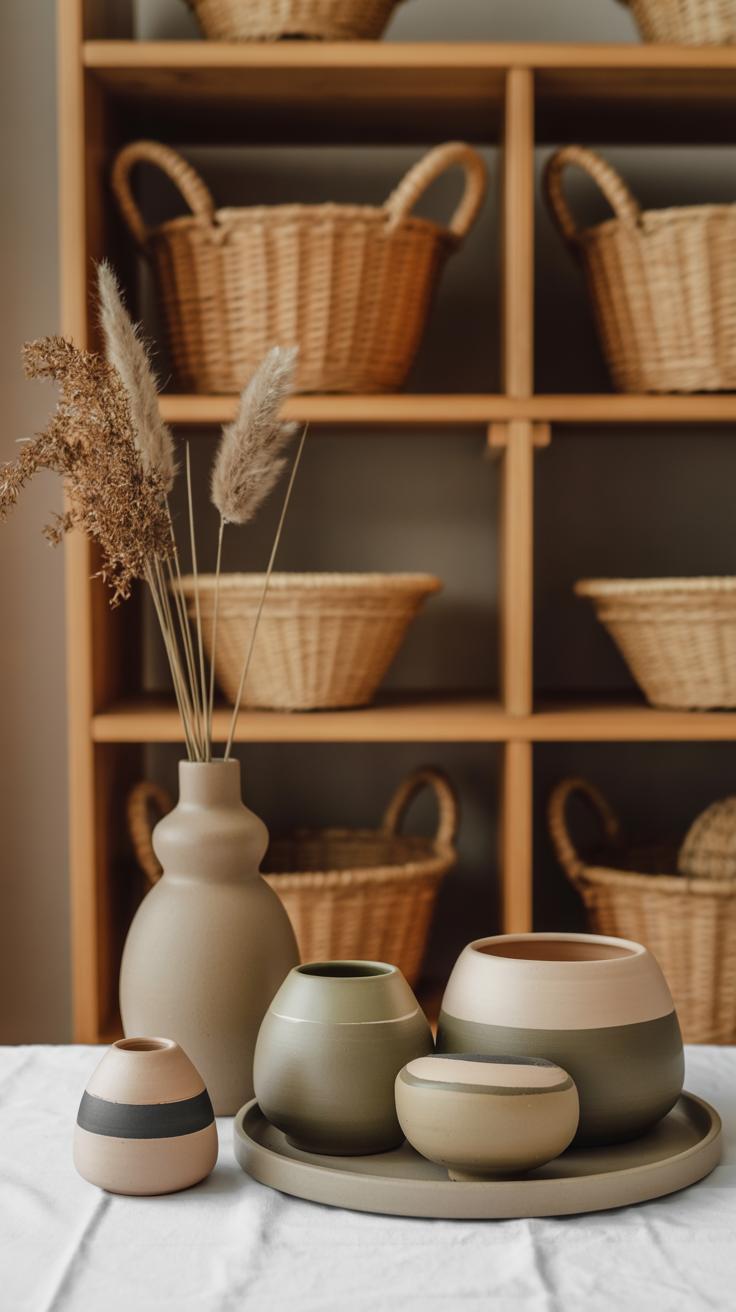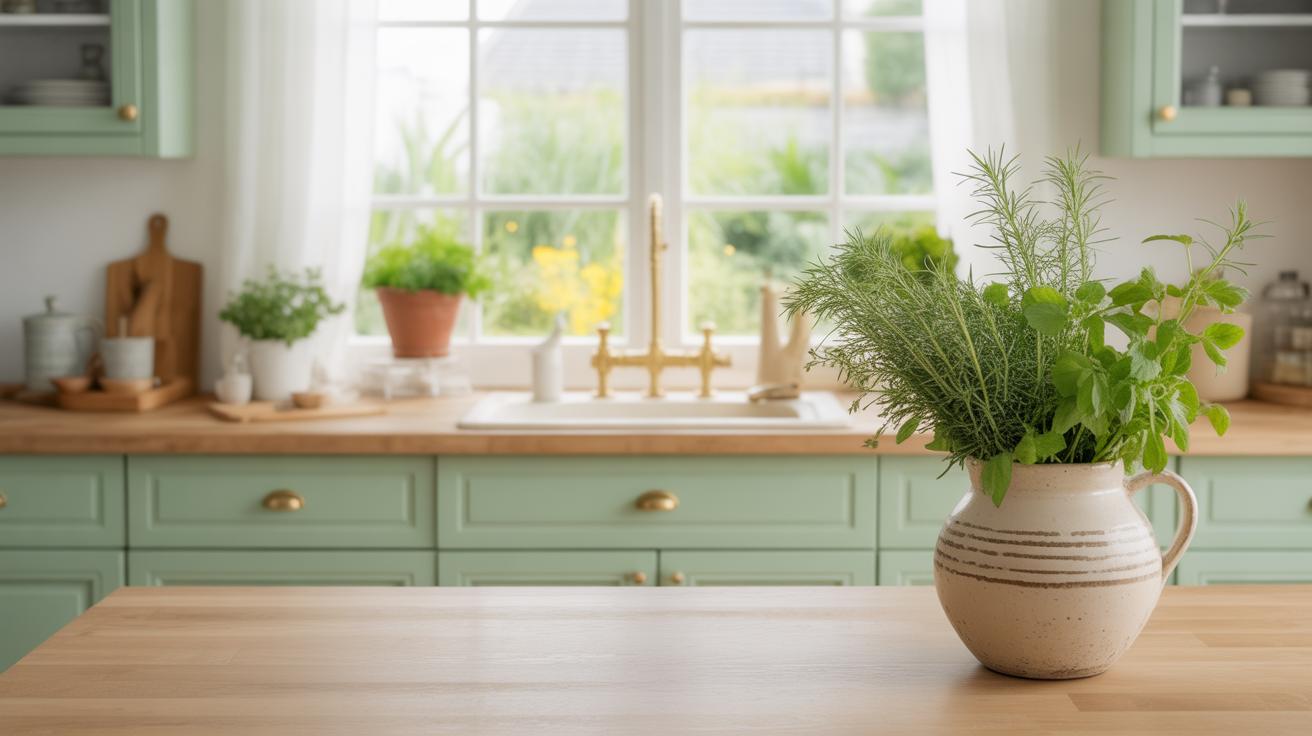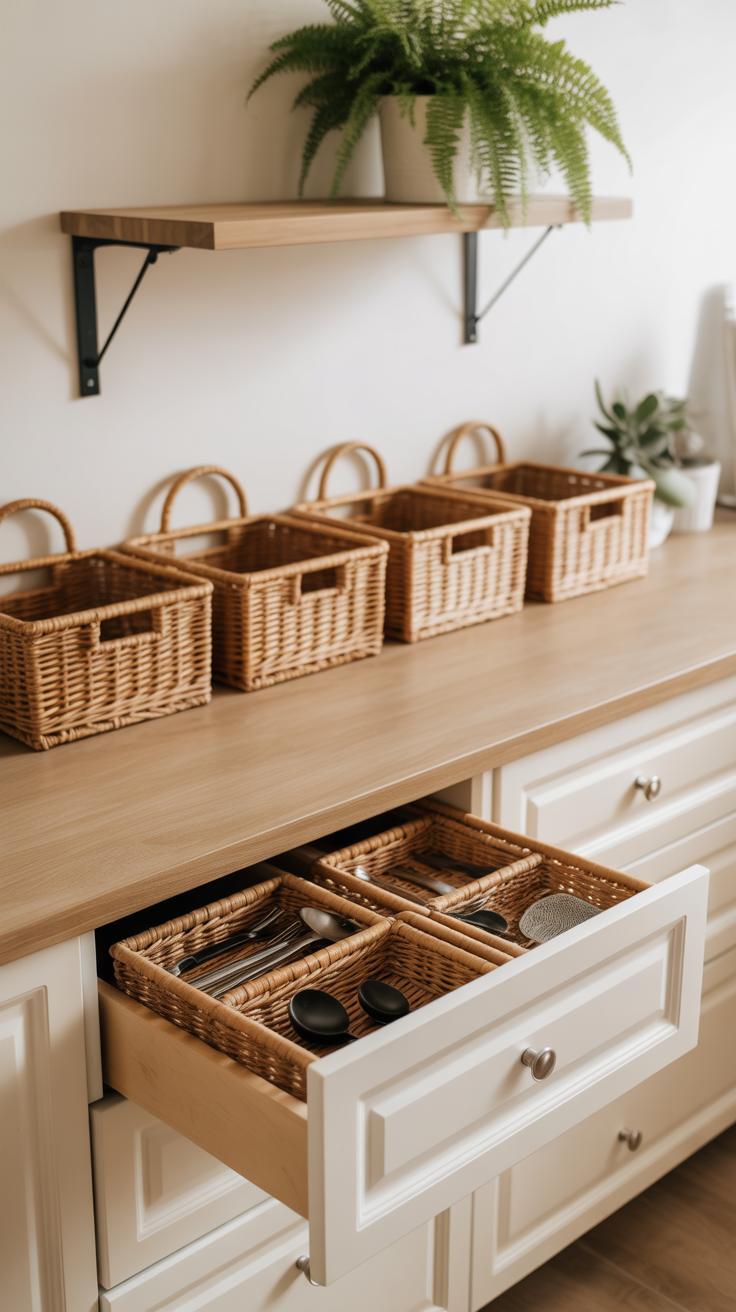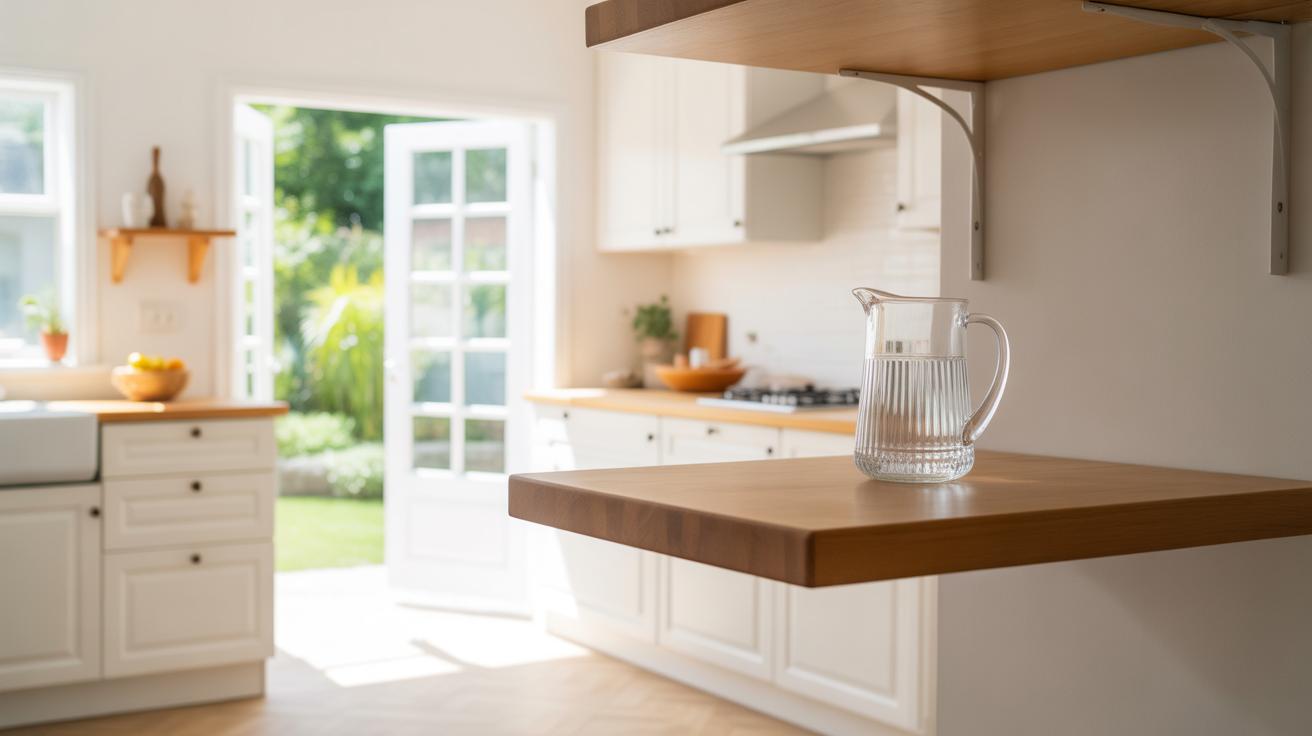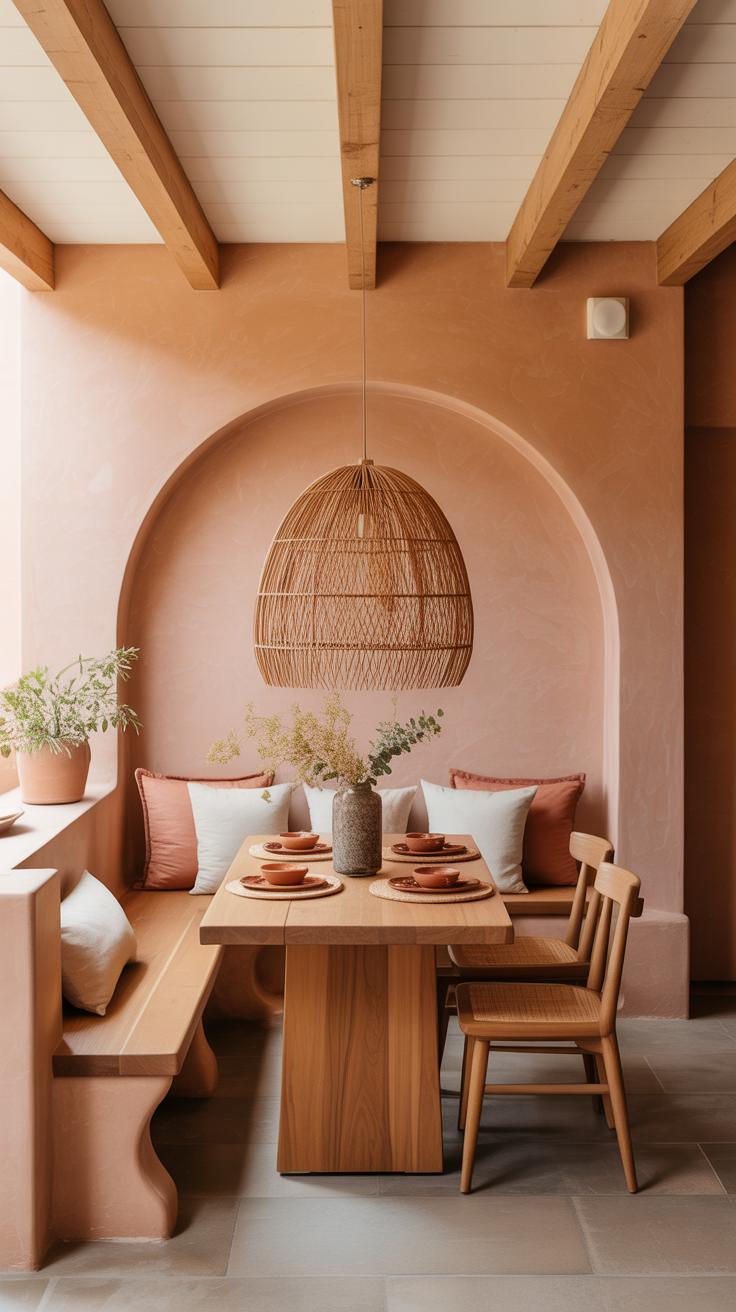Introduction
Your kitchen is more than just a place to cook. It’s where moments happen, meals are shared, and memories are made. Designing this space with earthy kitchen decor ideas can make it warm and inviting for you and your guests. Using colors and materials inspired by nature creates a calming environment that feels grounded and cozy. You will feel comfortable spending time in a kitchen that reflects natural warmth.
This article explores how to incorporate earthy tones and natural materials into your kitchen. From colors that bring calmness to wooden textures that add character, you will discover practical ways to create a kitchen space that feels welcoming and balanced. We guide you through ideas that blend style with nature, making your kitchen truly a homey place for everyone.
Selecting The Right Paint And Wall Finishes
Choosing paint colors in earthy tones can be surprisingly tricky. You might expect all browns or tans to feel warm, but the undertones make all the difference. For example, a beige with a hint of pink will evoke a different vibe than one leaning toward yellow. When picking your color, think about the rest of your kitchen’s lighting and materials. Natural light brings out warmth, but artificial lighting can change how paint appears by the evening.
Wall finishes matter just as much as the color itself. Matte finishes are great if you want the walls to feel soft and subtle, something that invites you to touch and linger. They absorb light, so your earthy tones will look richer but maybe a little darker. On the other hand, semi-gloss or satin finishes reflect more light, which can enliven smaller kitchens or those with less sunlight, making warm tones pop without feeling dull.
It can help to test samples on your walls before committing, especially if you lean toward muted reds or deep greens. These colors can shift dramatically depending on finish and surroundings. Also, consider how easy cleaning is — glossy surfaces wipe down more simply, which is practical in a kitchen, but matte paints give your space a relaxed, casual feel that’s hard to beat.
Thinking about texture is another angle. Some paints can mimic natural plaster or clay, adding subtle depth while staying within an earthy palette. This might be especially appealing if you want walls that don’t just look natural but somehow feel natural. Maybe that makes a kitchen more inviting, but I’m still unsure if it fits every style or every home. What do you think—do you prefer sleek or something a bit rugged?
Matte Or Glossy Earthy Finish
Choosing between matte and glossy finishes can feel tricky when working with earthy tones in your kitchen. Matte paints offer a soft, muted look that feels cozy and grounded. They hide imperfections better, which is a relief in a busy kitchen where walls can get scuffed or stained. On the flip side, glossy finishes bounce light and add a subtle sheen that can make earth tones pop with a fresh, clean vibe.
If you want a space that feels calm and slightly rustic—matte is your friend. But for small kitchens or areas like the backsplash, a satin or semi-gloss finish can brighten the room and is easier to wipe down. I once went with a matte olive green, and though it looked lovely, the wall near the stove was a bit hard to clean. Something glossier might have been smarter there.
Accent Walls To Highlight Earth Tones
An accent wall painted in a deep terracotta, rich clay, or dark mossy green can anchor your kitchen visually. It adds depth and interest, especially if the rest of your walls are in lighter, neutral earth tones. This trick helps break up the space without overwhelming it.
Try focusing the accent wall behind open shelves, a breakfast nook, or even the area around a cozy dining spot. It gives your kitchen personality and invites your eye to linger. But don’t just pick any wall—think about natural light and the size of the kitchen. A dark accent on a tiny kitchen might make it feel cramped. It’s about balance and, well, trying out what feels right in your space.
Incorporating Natural Materials For Texture
There’s something about natural materials that instantly softens a kitchen. Wood, stone, and clay don’t just sit there—they invite you to touch, see, even feel the story behind them. Texture plays a big role here. Smooth surfaces often feel cold or clinical in a kitchen, while textures can add a tactile warmth that makes the space truly welcoming.
Using Wood For Warmth And Character
Wood is probably the first material that comes to mind for bringing warmth. Whether it’s cabinets, open shelves, or rustic furniture, wood introduces texture and depth. The finish you choose changes everything.
- Matte or unfinished wood can feel raw and natural—sort of earthy in the purest sense. I find it a bit more relaxed, but some might see it as unfinished or rough.
- Glossy or polished wood offers a more refined look but can lose some of that natural charm.
- Stains range from light pine to deep walnut—each shifts the mood. Lighter finishes brighten up a kitchen but might show wear quicker. Dark woods feel cozier yet can shrink a room visually.
Choosing wood for your kitchen means balancing character with practicality, and honestly, some scratches or dents add personality over time.
Stone And Clay Surfaces
Stone and clay bring a grounding effect to kitchens, both visually and physically. Stone countertops like granite, soapstone, or even marble each have unique textures and patterns that make them stand out. Soapstone, for instance, feels softer and develops a patina that many find appealing. Marble might look elegant but requires more care—so, is it worth it? That’s up to your lifestyle.
Clay tiles often appear as splashbacks or flooring. Their uneven surfaces and slightly rough textures create subtle visual interest. These tiles come in earthy hues too—terracotta or muted browns—and can be plain or patterned.
Using stone and clay means inviting surfaces that can take some wear, but also ones that call attention through their imperfections and natural variance. It’s a kind of beauty that’s less about perfection, more about authenticity.
Creating Balance With Light In Earthy Kitchens
Lighting plays a key role in making an earthy kitchen feel warm and inviting. Without the right light, those beautiful wood grains or stone textures you’ve worked hard to showcase might seem dull or flat. But get it right, and the space feels alive, layered, and well-used. It’s not just about brightness—lighting needs to complement the rich hues and natural surfaces, pulling out their best qualities without overwhelming them.
Natural light is often the best friend of an earthy palette. Think about where you place your windows: south-facing windows can flood your kitchen with warm sunlight almost all day, enhancing colors like terracotta or ochre. If full windows aren’t an option, slim or higher windows can still bring in enough daylight to brighten corners without washing out subtle tones. As for window treatments, simple linen or light-filtering shades work nicely—they let light diffuse gently, softening shadows and adding a gentle glow that feels both calming and warm.
When natural light fades, warm artificial lighting can take over. Bulbs with a color temperature around 2700K mimic the warmth of sunset light, making spaces feel comfortable rather than harsh. Pendant lights over an island or workspaces are great for focusing light and adding character. I’m partial to under-cabinet lighting too—it quietly highlights textured backsplashes or wooden countertops without being obtrusive. Mixing layered light sources, such as recessed lights paired with accent lamps, tends to work best here. It keeps the kitchen from feeling too clinical or too dim but instead cozy and alive. Have you ever noticed how changing just one bulb can shift the whole kitchen mood? It’s remarkable what a difference light makes.
Choosing Earthy Kitchen Accessories
When selecting accessories for an earthy kitchen, it’s easy to focus too much on looks and forget the role of function. But practical items can quietly anchor the room’s warm feel without shouting about it. Think about textiles first—curtains, cushions, even rugs offer a lot more than color. Earth tones in natural fibers like linen, jute, or cotton can soften the kitchen’s sometimes harsh edges, making the space feel more inviting. A well-placed rug, for example, can break up cold tile or wood floors and lend a bit of comfort underfoot during long cooking sessions.
Functional décor goes beyond soft textiles. Wooden bowls or cutting boards do double duty: they’re handy tools and bring organic texture. Clay pots sit beautifully on open shelves or counters, blending utility and design. Woven baskets are another favorite—they offer storage, keep countertops tidy, and add that handcrafted vibe. It’s funny how these simple objects, often overlooked, help you connect with the kitchen as a lived-in place rather than just a work zone. Have you noticed how you reach for certain items more when they make you feel at ease?
Choosing these pieces is a bit like picking furniture for comfort as much as style—you want accessories that don’t just look right but also serve you day-to-day. Sometimes the line between décor and tool blurs, which makes the space feel more personal, not overly styled. Maybe that’s why earthy kitchens often feel so cozy: the items you need are also the ones that invite you to stay a minute longer.
Sustainable Choices For An Earthy Kitchen
Choosing sustainable materials feels almost natural when you want an earthy kitchen. It’s not just about looks; it’s about making decisions that, well, don’t weigh too heavily on the planet. Reclaimed wood, for example, brings history and character into your kitchen, but it also keeps old materials out of landfills. Bamboo is another interesting option—it grows quickly and looks surprisingly warm in cabinetry or flooring. And recycled stone, like countertops made from crushed glass or repurposed granite, adds texture without new mining.
These materials don’t just support the environment—they give your kitchen a sense of honesty, maybe even a story. But, I guess that comes with some quirks, like uneven grains or subtle marks that plain new wood wouldn’t have. It’s part of their charm, or so I think.
When it comes to appliances, picking those that use less power seems like a no-brainer. Energy-saving fridges or induction cooktops not only cut down your bills but also fit better with the whole vibe. Look for designs with muted tones or stainless finishes—they tend to blend well with earthy elements rather than sticking out like sore thumbs.
Have you ever wondered if a sustainable choice means compromising style? In many cases, you might be surprised. The rough edges of reclaimed wood or the soft glow of bamboo can bring warmth that polished materials often miss. So, maybe the trick is to view sustainability not as a restriction, but as an invitation to experiment in your earthy kitchen.
Organizing Your Earthy Kitchen
Keeping an earthy kitchen tidy and functional can feel tricky at times. You want to hold onto that warm, natural vibe without the clutter creeping in. Finding practical organization methods that don’t jar with the rustic, grounded look requires a bit of thought.
Open Shelving Vs Closed Cabinets
Open wooden shelves bring airiness and easy access to your everyday dishes, spices, or those charming earthenware mugs you love. They invite you to display your kitchen’s personality, but they can also show dust and mess quickly—so you must stay on top of cleaning and tidying.
Closed cabinets, especially in earthy tones like muted greens, soft browns, or clay hues, keep things out of sight and can make the space feel calmer. But you might lose some of that lived-in warmth because everything’s hidden away. Sometimes, it feels like closed storage can make the kitchen a bit more sterile, even when the colors are warm.
Smart Storage Solutions
Woven baskets are a natural hit here—they pair well with wood and stone surfaces while hiding loose items like snacks or linens.
- Drawer dividers help keep utensils and tools separated, making morning routines less frantic.
- Hooks on walls or inside cabinets can hold mugs, pots, or even your favorite kitchen towels, reducing countertop clutter.
- Consider ceramic jars or terracotta containers for storing dry goods; they add to the earthy aesthetic and keep things handy.
When organizing, try to balance what’s visible with what’s tucked away. You don’t want your kitchen to feel too bare or too congested. Somewhere in between often works best. Does your kitchen lean toward more open space, or do you prefer keeping things behind closed doors? Either way, subtle natural textures in your storage can make all the difference.
Bringing Earthy Kitchen Ideas Together
Combining color, materials, lighting, accessories, and organization is trickier than it looks. It’s tempting to focus on one element and forget the rest. But think of it like a recipe—each ingredient matters. Start with warm earthy tones on the walls or cabinets. Then layer in natural materials like wood shelves or stone countertops. Lighting is more than brightness—opt for soft, warm bulbs that highlight textures without glare.
Accessories should follow a subtle rhythm, not crowd the space. Try pottery, wicker baskets, or linen tea towels in muted shades. Organization, which you’ve already tackled, supports the look by keeping surfaces clear, letting the earthy vibe breathe. The goal isn’t to copy a style perfectly, but to harmonize these parts so the kitchen feels lived-in and inviting, not over-planned or staged.
Planning Your Design Step-by-Step
When you face your blank canvas, here’s a practical path to follow:
- Pick your color palette first. Think of warm browns, soft greens, ochres—start with paint or even just accents if repainting feels like too much.
- Introduce natural materials next. Wood is a classic, but also consider stone, clay, or even cork for flooring or backsplashes.
- Add lighting that complements rather than competes. Think pendant lights in subdued metal or paper shades.
- Bring in accessories slowly. Choose a few meaningful pieces that feel earthy—avoid clutter.
- Finally, organize with earthy storage solutions: woven baskets, wooden crates, or open shelving to showcase neat arrangements.
Taking it in steps may feel slow, but it gives you time to adjust and avoid a forced look. The last thing you want is to rush and end up with a space that feels artificial or unbalanced.
Inspiration And Personal Touches
Don’t forget what makes your kitchen yours. It’s tempting to follow trends or “rules” about earthy style, but personal touches matter most. Perhaps a hand-thrown mug from a market, a vintage cutting board, or a collection of family recipe cards displayed neatly.
Ask yourself what objects make you feel at home. Can they blend with your earthy color scheme without standing out harshly? Sometimes contrasting textures or colors work—but gently.
It’s okay if not everything matches perfectly or fits a strict theme. Those imperfections add warmth. After all, your kitchen isn’t a showroom; it’s your space to live in, cook in, and even occasionally rush through before grabbing a quick coffee. Let your personality shape it.
Conclusions
Using earthy tones and natural materials in your kitchen design brings a unique warmth and comfort to the space. These colors and textures create an environment where you can relax and enjoy cooking with family and friends. They help connect your kitchen to nature and promote a sense of calm and balance that enhances daily life.
As you plan your earthy kitchen decor, focus on simple, practical changes that reflect your personality and lifestyle. Whether it’s choosing the right paint, adding wooden cabinets, or selecting warm lighting, every element counts. Your kitchen will become a welcoming place that feels good to be in every day.



